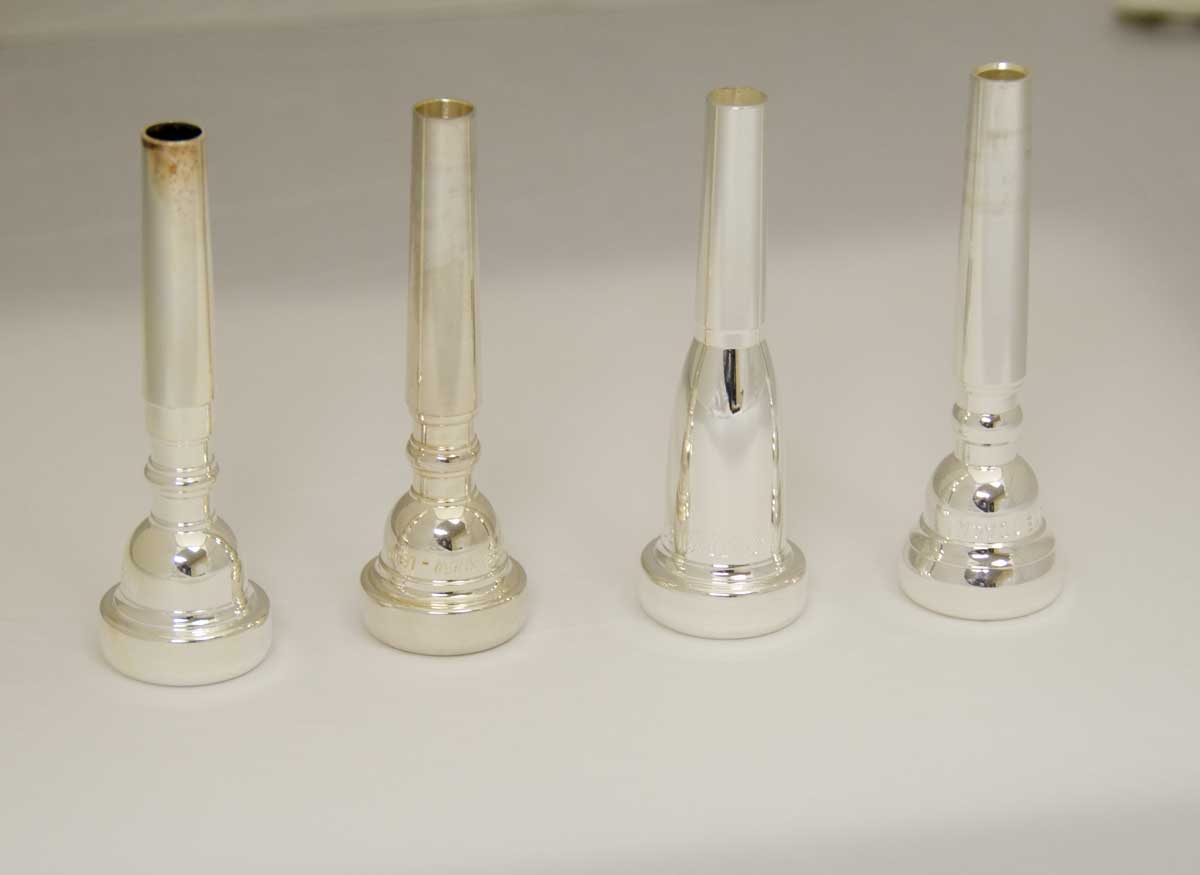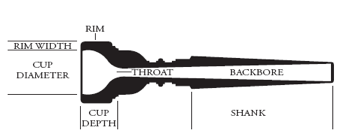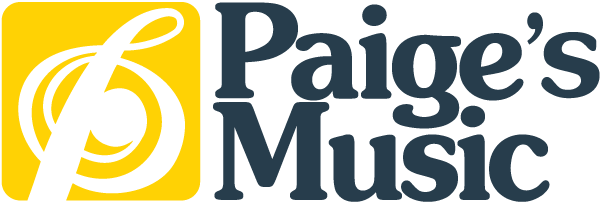Tips on Trumpet Mouthpieces

L to R: Bach 5C, Yamaha Bobby Shew Lead, Bach MegaTone 3C, Schilke 10A4a
Budding trumpet players can often improve their sound and playing experience by simply changing the mouthpiece they use. It’s such a small part of the instrument as a whole, but playing the correct model is incredibly important. Now, we could write an encyclopedia about all the different models and measurements mouthpieces come in, but in today’s blog post we are going to focus on helping young musicians understand how the components of their mouthpiece can affect their trumpet playing.
Firstly, there are five main components to a trumpet mouthpiece:

The mouthpiece and its dimensions you choose are going to affect many aspects of your trumpet playing such as intonation (the ability to stay in pitch), ease of attack, range, volume, flexibility, tone, and comfort.
Secondly, it’s important to understand that most beginner-level trumpets come with mouthpieces that have shallower cup depths and medium cup diameters (such as a Bach 7C or Bach 5C). A shallower cup is a bit easier for inexperienced players to produce a sound. As the student progresses in his or her musicianship, they may consider going to a deeper cup such as a Bach 3C. Why consider a deeper cup depth? A deeper cup allows more air flow. More air flow means a warmer, richer tone as well as increased volume and range. On the flip side, a mouthpiece such as the Yamaha Bobby Shew Lead mouthpiece has a very shallow cup depth and a narrow backbore. This provides the musician with an extra bright sound and upper register which is ideal for serious jazz trumpeters who need to hit those screaming double-G’s!
Also, it does not hurt to consider the plating of the mouthpiece. Most mouthpieces will be silver plated since silver produces a brighter sound. However, there are a variety of trumpet mouthpieces where the rim, cup, and even the entire mouthpiece, are gold plated. The reason for considering gold plating can vary. Some like the softer feel of the gold plating against the embouchure while others like the warmer sound gold plating provides. There are even musicians with silver allergies, so the gold plating is a great alternative.
Helpful Hint! When trying new mouthpiece models, start on a mid-range note, such a G on the staff, and go up chromatically to see if there is an improvement in range and if those higher notes are easier to hit with a good sound. Do the same going down chromatically into the lower register.
Lastly, it is a common misconception among young trumpet players that as the years go by they need to keep changing mouthpieces and go to a deeper and deeper cup depth (similar to how young woodwind players feel they need to keep changing to a harder reed every year). This is not necessarily the case. If you are advancing well and meeting your goals with your current mouthpiece, there is no need to change. However, if you do find yourself trying new models, ask yourself these questions:
1) Is my range increasing (upper and lower)?
2) Am I producing the kind of sound I want (classical, jazz, big band, etc.)?
3) Has my intonation improved?
4) Do I have better attacks at the front of my notes?
You are welcome to bring your instrument into Paige’s Music to try a variety of mouthpieces in one of our practice rooms! Your band director or private teacher may have suggestions for particular makes and models they would like you to try, but if you are not sure where to start in your mouthpiece journey, our Sales Associates can help you pinpoint your current ability and have you try models which may help you meet your musical goals.

No Comments